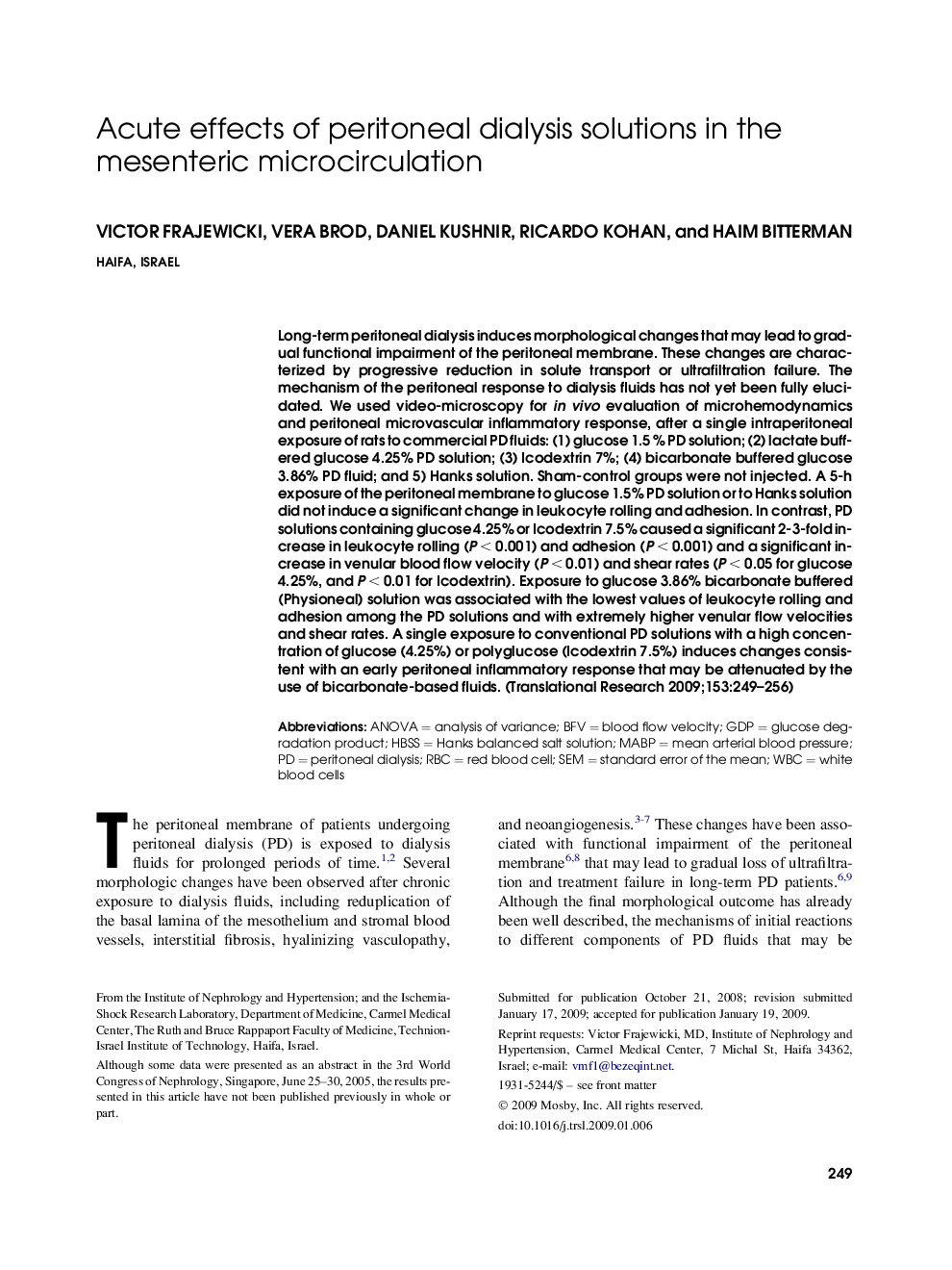| Article ID | Journal | Published Year | Pages | File Type |
|---|---|---|---|---|
| 3841127 | Translational Research | 2009 | 8 Pages |
Long-term peritoneal dialysis induces morphological changes that may lead to gradual functional impairment of the peritoneal membrane. These changes are characterized by progressive reduction in solute transport or ultrafiltration failure. The mechanism of the peritoneal response to dialysis fluids has not yet been fully elucidated. We used video-microscopy for in vivo evaluation of microhemodynamics and peritoneal microvascular inflammatory response, after a single intraperitoneal exposure of rats to commercial PD fluids: (1) glucose 1.5 % PD solution; (2) lactate buffered glucose 4.25% PD solution; (3) Icodextrin 7%; (4) bicarbonate buffered glucose 3.86% PD fluid; and 5) Hanks solution. Sham-control groups were not injected. A 5-h exposure of the peritoneal membrane to glucose 1.5% PD solution or to Hanks solution did not induce a significant change in leukocyte rolling and adhesion. In contrast, PD solutions containing glucose 4.25% or Icodextrin 7.5% caused a significant 2-3-fold increase in leukocyte rolling (P < 0.001) and adhesion (P < 0.001) and a significant increase in venular blood flow velocity (P < 0.01) and shear rates (P < 0.05 for glucose 4.25%, and P < 0.01 for Icodextrin). Exposure to glucose 3.86% bicarbonate buffered (Physioneal) solution was associated with the lowest values of leukocyte rolling and adhesion among the PD solutions and with extremely higher venular flow velocities and shear rates. A single exposure to conventional PD solutions with a high concentration of glucose (4.25%) or polyglucose (Icodextrin 7.5%) induces changes consistent with an early peritoneal inflammatory response that may be attenuated by the use of bicarbonate-based fluids.
